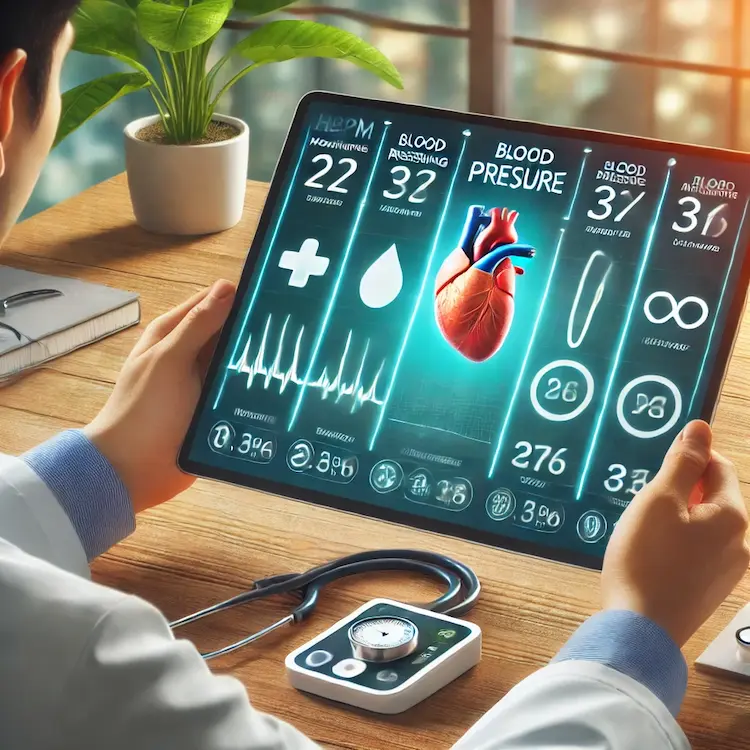Hypertension is a significant public health concern in the Philippines, affecting millions and contributing to cardiovascular diseases, stroke, and kidney failure. Traditional blood pressure monitoring often relies on clinic visits, which may not provide a complete picture of a patient’s condition. Home Blood Pressure Monitoring (HBPM) has emerged as a cost-effective and practical solution, allowing individuals to track their blood pressure levels in real time, improving treatment adherence and health outcomes.
This article explores the cost-effectiveness of HBPM in the Philippines, its advantages over traditional monitoring methods, its societal and economic impacts, and practical tips for its implementation. We also compare various HBPM devices and their associated costs, highlighting how this approach can benefit Filipino households.
Understanding HBPM and Its Importance
Home Blood Pressure Monitoring (HBPM) is the practice of measuring blood pressure at home using digital or manual sphygmomanometers. It allows patients to track their readings consistently, reducing the risk of misleading data from “white coat syndrome”—the phenomenon where blood pressure spikes due to anxiety in a clinical setting.

Why Is HBPM Cost-Effective?
- Reduced Medical Visits – Frequent hospital visits for BP monitoring incur transport costs, consultation fees, and potential lost income. HBPM minimizes these costs.
- Early Detection and Prevention – Regular monitoring can detect abnormal fluctuations early, preventing costly emergency treatments and hospitalizations.
- Improved Medication Adherence – Seeing real-time readings can encourage patients to follow their medication schedules, reducing complications.
- Long-Term Savings – Investing in a quality BP monitor (~PHP 1,500–5,000) can significantly cut down on medical expenses in the long run.
Comparing Monitoring Methods: Clinic vs. HBPM vs. Ambulatory BP Monitoring (ABPM)
| Method |
Cost |
Advantages |
Disadvantages |
| Clinic Monitoring |
PHP 300–1,500 per visit |
Conducted by professionals; structured environment |
Can be affected by white coat syndrome; inconvenient |
| HBPM |
PHP 1,500–5,000 (one-time) |
Continuous tracking; convenient; reduces doctor visits |
Requires patient discipline and training |
| Ambulatory BP Monitoring (ABPM) |
PHP 5,000–10,000 per test |
Provides a comprehensive 24-hour reading |
Expensive; limited availability in the Philippines |
Among these, HBPM stands out as the most cost-effective long-term option for hypertensive patients.
Economic and Societal Impact of HBPM in the Philippines
Economic Benefits
- Reduced Healthcare Burden – The Philippines spends billions on hypertension-related illnesses. Widespread HBPM adoption can decrease hospital admissions.
- Lower Insurance Costs – Health insurance companies may offer lower premiums for individuals actively managing their hypertension.
- Workforce Productivity – Effective BP management reduces absenteeism due to stroke or cardiovascular disease.
Cultural and Societal Considerations
- Filipino Dietary Habits – High salt and processed food consumption contribute to hypertension. HBPM can raise awareness and encourage healthier choices.
- Accessibility to Healthcare – Rural areas have limited access to medical professionals. HBPM empowers individuals to take control of their health.
- Family-Centric Healthcare Approach – In many Filipino households, family members care for elderly hypertensive patients. HBPM allows caregivers to monitor and adjust treatment plans accordingly.

How to Implement HBPM Effectively in the Philippines
Choosing the Right BP Monitor
- Automatic Digital Monitors (Recommended for convenience and accuracy)
- Manual Sphygmomanometers (Best for trained users)
- Smart BP Monitors (Bluetooth-enabled for tracking via smartphone apps)
Best Practices for Accurate Readings
Measure at the same time daily (morning and evening).
Sit in a quiet, relaxed position for five minutes before measuring.
Avoid caffeine, smoking, or exercise 30 minutes prior.
Keep a log of readings and share with a healthcare provider.
Challenges and Potential Solutions for HBPM Adoption in the Philippines
Barriers
- Initial Cost Barrier – While cost-effective in the long run, some low-income households may struggle with the upfront expense of an HBPM device.
- Lack of Awareness – Many Filipinos rely solely on clinic visits for BP checks.
- Technological Literacy – Older adults may find digital monitors challenging to use.
Possible Solutions
Government health programs providing subsidized BP monitors to at-risk communities.
Public health campaigns to educate citizens on HBPM benefits.
Family involvement in training elderly users.
Conclusion
HBPM is an invaluable tool for Filipinos managing hypertension, offering significant cost savings, convenience, and improved health outcomes. Given the Philippines’ economic and healthcare landscape, widespread HBPM adoption could reduce medical costs, improve patient adherence, and enhance overall public health.
Key Takeaways
- HBPM is a cost-effective alternative to frequent clinic visits.
- It helps prevent hypertension-related complications through early detection.
- Cultural factors, like diet and family caregiving, impact HBPM success in the Philippines.
- Government and community support can improve accessibility.
Actionable Recommendations
- Invest in a reliable BP monitor and use it consistently.
- Educate family members on proper BP measurement techniques.
- Advocate for government or employer support in providing BP monitoring tools.
- Maintain a healthy lifestyle to complement HBPM benefits.

